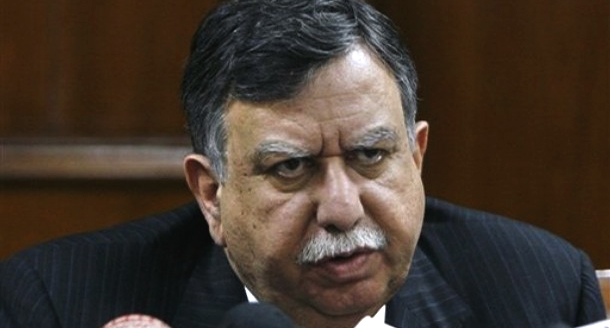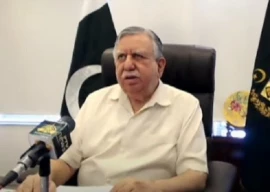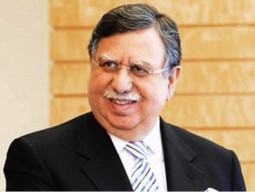
ISLAMABAD:
Minister for Finance Shaukat Tarin on Friday announced a Rs8.5 trillion tax-loaded budget that he plans to finance by taking Rs4 trillion new debt while also making an attempt to strike a balance between the International Monetary Fund’s (IMF) demands and economic growth.
Tarin presented his first and the PTI government’s fourth budget amid rumpus by the opposition parties in the National Assembly, constantly chanting anti-government slogans.
The government has offered Rs42 billion tax incentives to industrialists to provide an impetus to economic growth by lowering the cost of raw materials. It has also allocated funds for helping people with cheap loans to start their businesses and buy homes.
But the government has imposed Rs383 billion worth of new taxes –70% of them regressive and high inflationary in nature. About Rs119 billion worth of overall tax relief measures were also announced.
The Rs383 billion additional revenue measures were the second-highest taxes imposed by the government after it slapped Rs735 billion taxes through its second budget.
In addition to that, the Petroleum Levy collection target is increased by 20% to Rs610 billion, which will put petroleum products prices on fire, partially also due to the imposition of 17% GST on crude oil imports.The mode of collecting taxes on sugar has been changed from factory-gate to retail shop, which will increase the commodity’s price by another Rs7 per kilogramme.
The budget, particularly the Finance Bill 2021, has a clear mark of the IMF, which is also evident from showing of Rs496 billion or $3.1 billion IMF loan as part of foreign loans in fiscal year 2021-22.
“The economic stabilisation has been achieved and now inclusive and sustainable growth is the target,” Tarin said while delivering an inaudible speech amid ruckus by the opposition parties. The economic czar announced a 4.8% growth target for the next year.
The size of the budget is Rs8.487 trillion – higher by Rs1.4 trillion or 19%, indicating that the government has adopted fiscal expansionary policy in the second half of its term.
However, the lion’s share –36% of the budget or Rs3.06 trillion –will go to debt servicing, thanks to wrong policies of the central bank and low revenue collection.
The power subsidies are again underfunded by a minimum of Rs170 billion, as the government has allocated only Rs330 billion for tariff-related subsidies against the demand of Rs500 billion by the Power Division. This will augment the circular debt.
The federal budget deficit –the gap between the government’s income and expenditures – is estimated at a whopping Rs4 trillion, which is equal to 7.4% of the Gross Domestic Product (GDP) and is even higher than this fiscal year.
The country faces this deficit despite the fact that the government has set the Federal Board of Revenue (FBR) tax target 24% higher than the outgoing fiscal year’s expected collection.
The FBR’s target is set at Rs5.829 trillion and the government has to take highly inflationary measures like imposing taxes on food items, crude oil imports and telephone calls.
The finance minister managed to avoid an increase in direct taxes for the salaried class but taxed almost every consumable good, including petrol, sugar, internet, mobile phone and edible items.
The budget has attempted to address the low economic growth and also aims at cutting jobless rate by offering loans to the youth, although it will target only a limited size of the population.
The finance minister admitted that there will be inflationary pressures in the next fiscal year.
The opposition MPs chanted slogans “Go Niazi Go, IMF-dictated budget unacceptable” while reminding Prime Minister Imran Khan about his “broken promises” to give jobs and construct five million homes.
The debt-to-GDP ratio is projected to decline in the next fiscal year, which indicates that the government has adopted fiscal discipline, Minister of State for Information Farrukh Habib said.
Budget outlay
The total size of the federal budget was projected at Rs8.5 trillion—up Rs1.4 trillion or 19%. But nearly 47% of it will be financed by adding more debt to an already highly unsustainable debt.
The federal budget deficit is projected at Rs3.990 trillion—up by Rs553 billion or 16% over this year. In terms of the GDP, the federal budget deficit will be equal to 7.4% — slightly higher than this year’s level.
But the real challenge will be the implementation of the budget, as its success hinges upon the FBR’s ability to achieve Rs5.829 trillion tax collection targets.
The failure in achieving the target would mean reversing the first step that the government has taken towards addressing the core issue of high indebtedness.
The government has proposed a Rs7.9 trillion gross revenue target for the next fiscal year—up by Rs1.4 trillion or 20% over this year’s estimates. The share of the provinces has been estimated at Rs3.42 trillion—also higher by Rs538 billion or 19%, the figures show.
The net federal receipts are estimated at Rs4.4 trillion—up from Rs3.7 trillion or 21.5%. The current expenditures are estimated at Rs7.6 trillion—up by Rs922 billion or 14% over this year. The PSDP has been projected at Rs900 billion—up by Rs250 billion or 38.4%.
During the cabinet meeting, some members opposed levy of Rs5 on use of every gigabyte internet data, which the government has proposed to collect additional Rs30 billion.
It was suggested that the PSDP may be cut by Rs50 billion to Rs850 billion in order to compensate for the revenue impact of not levying the Rs5 tax.
“The discussion did take place about reducing the PSDP size but, so far, no decision about withdrawing Rs5 per GB data use tax has been taken,” Member Inland Revenue Policy Tariq Chaudhry said while addressing a news press conference.
The government has projected a primary budget deficit of Rs377 billion or equal to 0.7% of the GDP. The overall deficit is projected at Rs3.4 trillion or 6.3% of the GDP on the back of Rs570 billion savings by the provinces.
The projections showed that the total public debt will be 81.8% of the GDP or Rs44 trillion by the end of next fiscal year. For this fiscal year, the debt has been projected at 83.1% of the GDP or Rs40 trillion.
The public debt would increase because of the budget deficit and the current account deficit will widen due to an expansion in the economy.
The government has proposed Rs1.370 trillion for defence spending, which is equal to 16% of the budget. The amount is exclusive of the armed forces development programme and military pensions.
For subsidies, the government has allocated Rs682 billion, over three times more than this year’s original allocations. However, the tariff-related power subsidies are only Rs330 billion, which is Rs170 billion less than what the Power Division had demanded.
The government has allocated another Rs266 billion for picking up the circular debt that is parked in a holding company and to pay the dues of the independent power producers (IPPs).
For Naya Pakistan Housing Authority, Rs30 billion subsidies have been given while an amount of Rs3 billion is given for interest cost-related subsidy. For pensions, the government has estimated the cost at Rs480 billion for next fiscal year, including Rs360 billion military pensions.
Tarin announced 10% ad-hoc relief allowance in the salaries and pensions of federal government employees, which would be effective from July 1. Similarly, to minimise the inflationary pressures, especially on the labourers and workers, the government has increased the minimum wage to Rs20,000 per month.
He said one of the top priorities of the incumbent government was to uplift the downtrodden segments, and for the purpose 40% of the total population was given cash transfers, besides providing relief to 15 million households across the country. He added the downtrodden segments would be fully taken care of.
The minister said that the government was committed to fast tracking implementation of CPEC as to date, 17 projects worth $13 billion had been completed and another 21 worth $21 billion were underway, while additional 26 strategic projects of $28 billion were in the pipeline.
He also said multiple relief measures had been taken for livestock and poultry sectors as well as the agricultural sector in this budget. The minister said that the government had taken kinetic measures to boost the industrial growth to tear away the label of fragile, attached with the economy.























































COMMENTS
Comments are moderated and generally will be posted if they are on-topic and not abusive.
For more information, please see our Comments FAQ